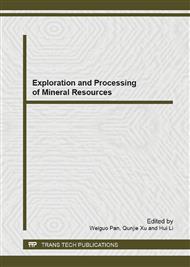p.574
p.580
p.585
p.589
p.593
p.597
p.601
p.606
p.610
Sedimentary Facies Influence Oil Production with Grey Correlation Degree Method
Abstract:
The sedimentary facies is the combination of the sediment which has some rules of lithological and construction characters and paleontological evidence. It characterizes the source direction and the strength degree of water dynamics. As the developmental situation of the reservoir of different sedimentary facies is different, the permeability, porosity and oil saturation is distinctive. The production is related to the sedimentary facies, this lead to the different production capacity of different sedimentary facies. The oil-producing capacity varies with the sedimentary facies of the reservoir. Therefore, different kinds of data of the reservoir must be analyzed with proper methods. This passage, using the single layers data and the well history data of 244 wells in M block of Daqing Oil Field, through the method of grey relation analysis theory, analyzes the influence of the sedimentary facies to the productivity of the production well. And the weight of different sedimentary facies to the oil productivity of the production well is confirmed. Also, the oil productivity of the production well is quantified.
Info:
Periodical:
Pages:
593-596
Citation:
Online since:
December 2013
Authors:
Price:
Сopyright:
© 2014 Trans Tech Publications Ltd. All Rights Reserved
Share:
Citation:


